Keynotes
1 Prof. A Elwakil
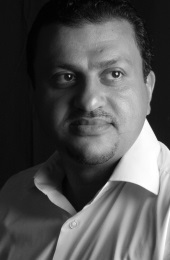
Department of Electrical & Computer Engineering
Sharjah University
Web site :http://www.ahmed-elwakil.org/
Prof. Ahmed Elwakil received his B.Sc. and M.Sc. degrees from the Dept. of Electronics & Communications at Cairo University and his Ph.D. from the Dept. of Electrical & Electronic Engineering at the National University of Ireland, University College Dublin. Since September 2000, He has been with the Dept. of Electrical & Computer Engineering at Sharjah University, United Arab Emirates where he is currently a Professor. He served as Dept. Chair from 2008 to 2012. His research interests are primarily in the areas of Circuit Theory and Design, Nonlinear Dynamics, Chaos theory and Fractional-order circuits where he has authored and co-authored over 100 publications in these areas.
Title : Fractional Order Circuits and Systems: Modeling and Design Examples
Abstract : Fractional-order circuits and systems have been labeled as 21st century circuits and systems.Indeed, scientists and engineers have long been designing, modeling and analyzing systems using integer-order differential equations which lead to integer-order system models.However, differential equations of arbitrary order are mathematically valid in what is known as Fractional Calculus.In this talk, we go through the following:
(1) Fractional Calculus History and Definitions
(2) Fractional Trigonometric Identities
(3) Stability and Impulse response of Fractional systems
(4) Fractional-order Circuit Design
(5) Fractional Capacitor Realizations
(6) Fractional-Order Oscillators
(7) Fractional-Order Filters
(8) Modeling of Biological Tissues using Fractional-order models
(9) Modeling of Super-capacitors using Fractional-order models
2 Prof. Lev Ryashko
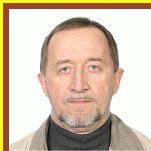
Department of Mathematics
Ural State University
Lenina, 51, Ekaterinburg
Russia
lev.ryashko@usu.ru
Web site :http://kmf2.math.usu.ru/people/RyashkoEng.html
Lev Ryashko is a Professor at the Ural Federal University. He received his Candidate of Science (Ph.D) degree in differential equations from the Ural State University (Ekaterinburg) in 1980 and the Doctor of Science degree in systems analysis and control from the Moscow Institute of Electronics and Mathematics in 2006.
Prof. Ryashko is the (co)author of more than 80 journal papers and 50 conference abstracts, published since 1976. He is also the (co)author of 3 research monographs “Nonlinear Dynamics: From Order to Chaos”, “Stochastic Attractors of Nonlinear Dynamic Systems”, “Stochastic Attractors: Sensitivity, Bifurcations, Control“, published in Russian. His research interests include noise-induced phenomena in zones of transitions from order to chaos, stochastic bifurcations, stabilization and control of nonlinear dynamic systems.
Title : Stochastic sensitivity analysis of noise-induced bifurcations and transitions to chaos
Abstract : A new mathematical framework of stochastic sensitivity function technique for approximating stochastic attractors is presented. Constructive applications of this technique to the analysis of stochastic bifurcations and noise-induced chaos are discussed. On the basis of specific examples, we show how to use this technique to solve some problems of stochastic oscillations control and chaos suppression.
3 Prof. Jiu Ding
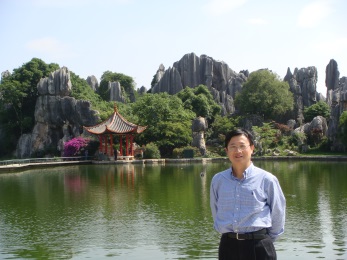
Department of Mathematics
The University of Southern Mississippi
Hattiesburg, MS 39406
Email: jiudin@gmail.com
Web site :http://www.math.usm.edu/jding/
Title 1 : The Maximum Entropy Method for the Statistical Study of Chaos
Abstract : Since Jaynes introduced his famous maximum entropy principle in 1957, the maximum entropy method has been widely used for the recovery of density functions in physical science and engineering. However, the notorious intrinsic ill-conditioning of this numerical scheme makes it impractical in actual computations. A recent modification, based on the partition of unity property of the finite element basis functions and a more general criterion, has made the classic method much more practical in performance. In this talk we shall first review the basic idea behind various entropy concepts from Shannon's to Boltzmann's. Then we introduce the Jaynes principle and the resulting maximum entropy method. Finally we present a new maximum entropy method for the computation of stationary densities of chaotic dynamical systems, inspired from a key property of finite element methods.
Title 2 : 怎样写英文学术论文
4 Yuxia Li (李玉霞)
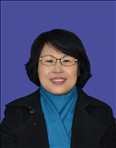
Department of information and electrical engineering
Shandong University of Science and Technology
Web site :http://xindian.sdust.edu.cn/rcsz/ShowArticle.asp?ArticleID=717
Prof. Yuxia Li is the vice dean of College of Information and Electrical Engineering of Shandong University of Science and Technology, deputy director of the robotics research center, director of the Shandong Provincial Key Laboratory of robotics and artificial intelligent technology, Shandong University of Science and Technology non-Party intellectuals association. She was the gest associate editor of International Journal of Bifurcation and Chaos, and the reviewer of IEEE Trans. Circuits and Systems、Int. J.Circuit Theory and Application. She was the program committee member of International Workshop on Chaos-Fractal Theory and its Applications(IWCFTA)IWCFTA2009 and organizing committee member of IWCFTA 2010. Her research interested in artificial intelligent control theory and technology of robotics. She has published more than 80 research papers, including 22 SCI indexed papers, 28 EI indexed papers and 16 ISTP indexed papers. Her researches have been cited 350 times by other researchers. One of her paper has been cited 120 times. She has 3 national invent patents. She received Excellent Doctor Dissertation Award of Guangdong Province, the award nomination of National Excellent Doctor Dissertation, the first prize of Shandong province science and technology invention award, Shandong province university outstanding achievements in scientific research, scientific research award.
Title : The memristive characteristics of Ba0.77Sr0.23TiO3 film device
Abstract : The memristive characteristics of Ba0.77Sr0.23TiO3 film device-Abstract.pdf
5 Dr Nelson Sze-Chun Chan(陈仕俊)
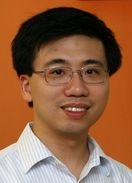
Department of Electronic Engineering and State Key Laboratory of Millimeter Waves
The City University of Hong Kong
Web site :http://www.ee.cityu.edu.hk/~scchan/
Nelson Sze-Chun Chan (陈仕俊) received the B.Eng. degree in electrical and electronic engineering from the University of Hong Kong, Hong Kong, China, in 2001, and the M.S. and Ph.D. degrees in electrical engineering from the University of California at Los Angeles (UCLA) in 2004 and 2007, respectively. He is currently an Associate Professor in the Department of Electronic Engineering and the State Key Laboratory of Millimeter Waves at the City University of Hong Kong, Hong Kong, China. He received the Dr. Bor-Uei Chen Scholarship of the Photonics Society of Chinese-Americans in 2007 and the departmental Outstanding Teacher Awards in 2009-2012. He is also serving as a Guest Editor for IEEE Journal of Selected Topics in Quantum Electronics for the Issue on Semiconductor Lasers scheduled for 2013 and as a Guest Associate Editor for International Journal of Bifurcation and Chaos. He was on the Technical Programme Committee or the Organizing Committee for conferences such as OECC 2009, PHOTONICS 2010, and APMC 2012. He is currently the Secretary of the IEEE Photonics Society Hong Kong Chapter, the Advisor for the Optical Society of America CityU Student Chapter, and one of the Directors of the Hong Kong Optical Engineering Society. His research interests include nonlinear dynamics of semiconductor lasers, optical chaos generation, random bit generation, radio-over-fiber, and photonic microwave generation.
Title : Period-One Oscillations in Laser Diodes for Microwave Photonic Applications
Abstract : A constant continuous-wave optical injection can invoke various interesting nonlinear dynamics in a laser diode. Despite being a photonic device, the laser becomes an excellent source of microwave and millimeter wave once the period-one dynamics are harnessed. In this presentation, the applications of period-one dynamics in the field of microwave photonics will be reviewed. The period-one dynamics allow generation of microwave signals that are widely tunable, optically controllable, deliverable over low-loss optical fibers, and immune to dispersion-induced power penalties. (1) Radio-over-fiber communication is investigated experimentally. Both uplink and downlink transmissions are demonstrated at a subcarrier microwave frequency of 16 GHz using simply a 2.5-Gbps-grade laser. (2) Stable millimeter wave generation is also demonstrated experimentally. Dual-loop optical feedback is applied to substantially reduce the frequency fluctuations of the period-one oscillation. Millimeter wave at 45 GHz is generated from a laser with a modulation bandwidth of only 7 GHz with a very small signal linewidth of 50 kHz. (3) Photonic microwave filtering with fine-tuning capabilities is also realized by synergizing the functionalities of fiber gratings and optical injection. Hence, the simple period-one oscillation dynamics have great potentials in photonic microwave applications.
6 Prof. Junji Ohtsubo(大坪顺次)
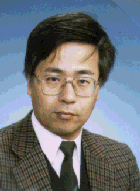
Department of Systems Engineering
Shizuoka University
Web site :http://www.sys.eng.shizuoka.ac.jp/~ohtsubo1/
Junji Ohtsubo received the B.S. degree in electronics from the Kyushu Institute of Technology in 1973, and the M.S. and Ph.D. degrees in electronics from Hokkaido University in 1975 and 1978, respectively. In 1978, he joined the Mechanical Engineering Laboratory, MITI, Japan. During 1981–1982, he was a Research Associate at the Institute of Optics, University of Rochester. He joined Shizuoka University, Shizuoka, Japan, as an Associate Professor in 1985 and is presently a Professor in the Department of Systems Engineering. His current research interests are nonlinear dynamics in optics, chaos in semiconductor lasers, optical information processing and computing, optical security systems, statistical optics, speckle, and optical metrology. Prof. Ohtsubo is a Fellow of the Optical Society of America and a member of IEEE, SPIE, AIP, the Japanese Society of Applied Physics, the Optical Society of Japan, and the Laser Society of Japan.
Title : Semiconductor Lasers: Stability, Instability and Chaos
Abstract : Semiconductor Lasers: Stability, Instability and Chaos.pdf
7 Prof. K Alan Shore
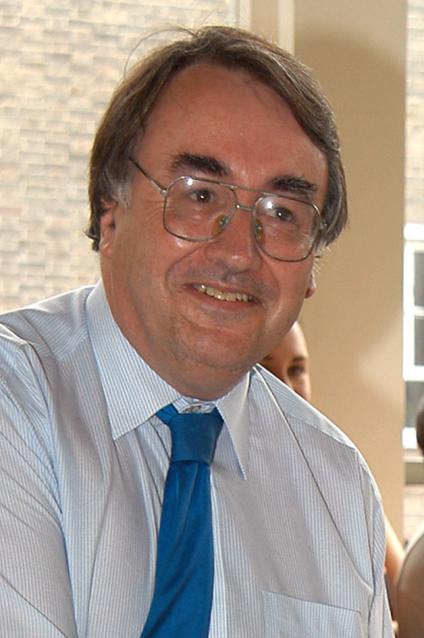
Bangor University
Web site :http://pages.bangor.ac.uk/~ees806/
K Alan Shore is a professor at Bangor University. In 1975-1976, he has been a Research Fellow of Dept. Applied Physics at UWIST of Cardiff, after 1976 he became an Applications Programmer until 1979. In 1979-1983 he has been a Lecturer of Dept. Electrical Engineering and Electronics at University of Liverpool. In 1983-1986 he has been a Lecturer in School of Electrical Engineering at University of Bath. After 1986, he became a Senior Lecturer until 1990. After 1990, he has been a Reader until 1995 In April he became a Professor of Electronic Engineering in University of Bath (Personal Chair). And in Sept he became Professor of Electronic Engineering in University of Wales. After 2001, he is a Director of ICON Centre of Excellence until now. Besides these, in 2002 -2006 he acted as a Head in School of Informatics of University of Wales in Bangor, in 2006-2007 he acted as Head in College of Physical and Applied Sciences of University of Wales in Bangor.
Title : Optical Chaos for Communications and Counting
Abstract : This paper will discuss the generation and application of optical chaos with specific attention given to applications in private communications and random number generation. The presentation will emphasis experimental implementations based on external cavity semiconductor lasers.
8 Prof. Ingo Fischer
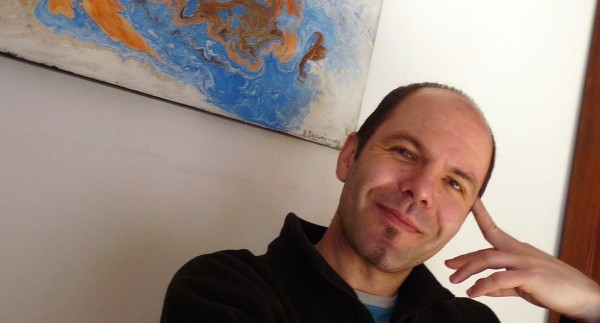
IFISC (UIB-CSIC)
University of the Balearic Islands
Web site :http://ifisc.uib-csic.es/ingo/
Prof. Fischer's main research is focus on emission properties of modern photonics sources, tailoring emission properties of semiconductor laser sources, utilizing nonlinear dynamical properties for photonics functionalities and from sources to systems.
Title : Exploring chaotic semiconductor lasers for high speed random bit generation: practical and information theoretic limitations
Abstract : We implement an ultra fast random bit generator based on the complex dynamics of a semiconductor laser, an ultra fast random bit generator an ultra fast random bit generator laser. We show that dynamics, acquisition and post processing conditions play key roles for the randomness of the bits. With the proper balance between these three factors, we demonstrate the potential of the system to generate random bits at rates of 160 Gbit/s for 8bit digitization and 480 Gbit/s for 16-bit digitization. Finally, we discuss our results in the context of information theoretic limitations.
9 Prof. Yuncai Wang(王云才)
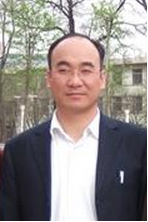
College of Physics and Optoelectronlcs
Taiyuan University Of Technology
Web site :http://blog.sciencenet.cn/?303458
Prof. Yuncai Wang received his M.Sc. degree and Ph.D from the Chinese Academy of Science, Xi'an Institute of Optics and Fine Mechanics in 1994 and 1997, respectively. He was the visiting scholar of Technical University of Berlin and University of Darmstadt of Germany. He has published more than 120 research papers, in which 99 papers have been cited by SCI and EI journals. Furthermore, he has 7 national invention patents.
Title : Broadband chaos generation and prototypes of chaos-based OTDR and RNG
Abstract : Broadband chaos generation and prototypes of chaos-based OTDR and RNG.pdf











